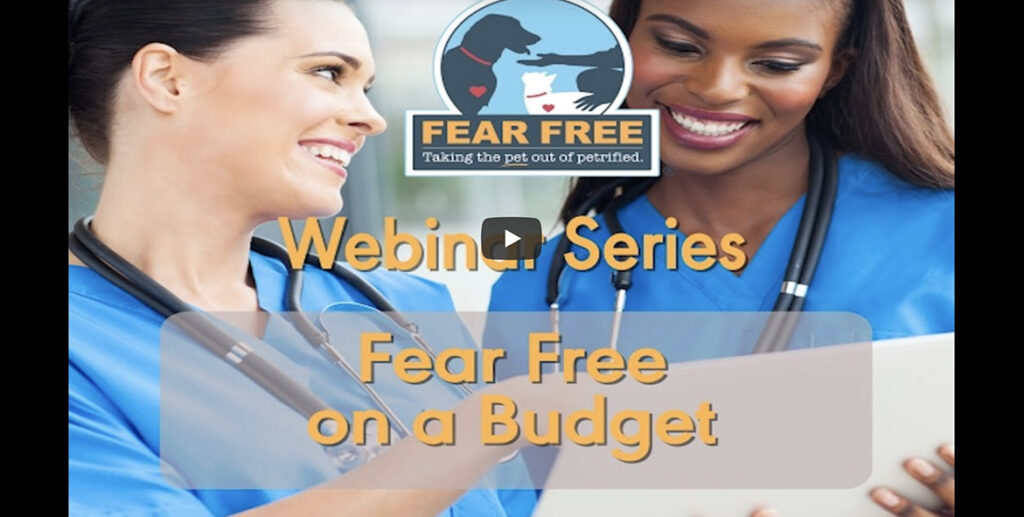
Fear Free on a Budget
Listen to Practice Certification Manager Dr. Rachel Abrams for tips on how many Practice Certification standards can be met with little to no strain on your budget.

Fear Free on a Budget
Listen to Practice Certification Manager Dr. Rachel Abrams for tips on how many Practice Certification standards can be met with little to no strain on your budget.
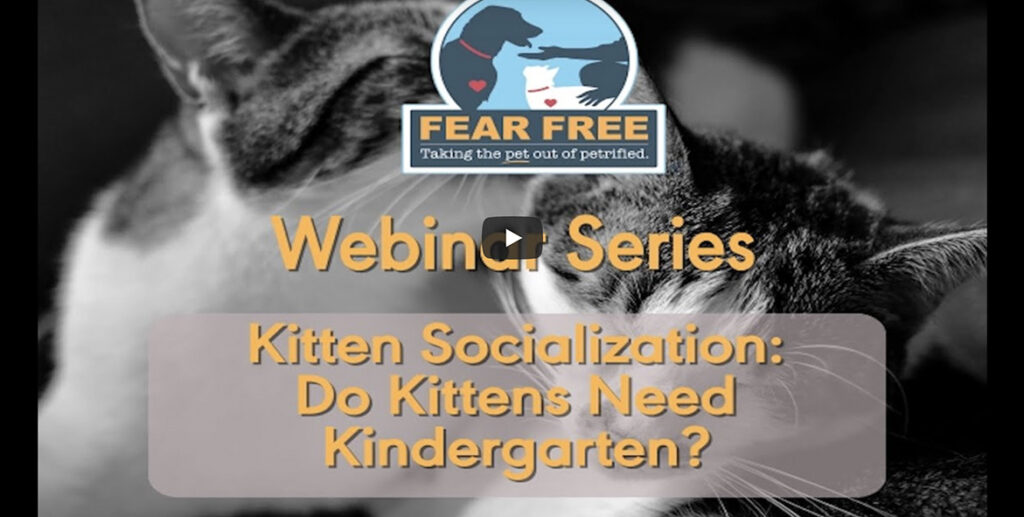
Kitten Socialization: Do Kittens Need Kindergarten?
Getting kittens off to a good start lays the foundation for an adulthood free of fear, anxiety, and stress. But just what does a “good start” mean? What exactly is kitten socialization? What role does genetics play, and what should we be doing for our kitten patients? In this webinar, Dr. Krista Sirois answers these questions and discuss the benefits of establishing a Kitty Kindergarten program in your clinic for your patients, pet parents, and your team.
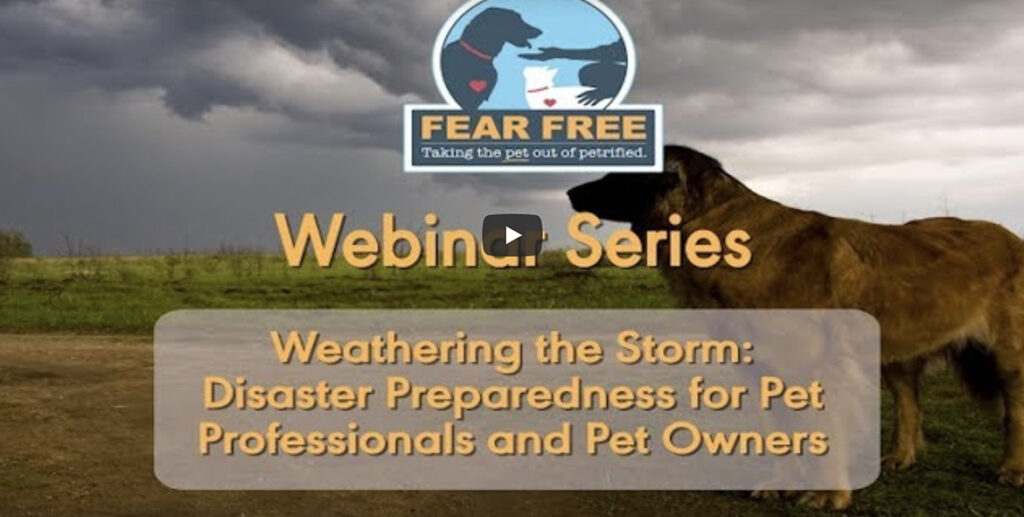
Weathering the Storm: Disaster Preparedness for Pet Professionals and Pet Owners
If a disaster hit your community tomorrow, would you and your business be prepared? How about the animals that live in your home or community? It is never too late to begin planning for a disaster or business disruption. In this webinar, representatives from State Farm talk about disaster preparedness, having a business continuity plan, and what insurance does and doesn’t cover. Whether you are a pet professional or a pet parent, this webinar can help you prepare for and recover from the unexpected.
Sponsored by State Farm.
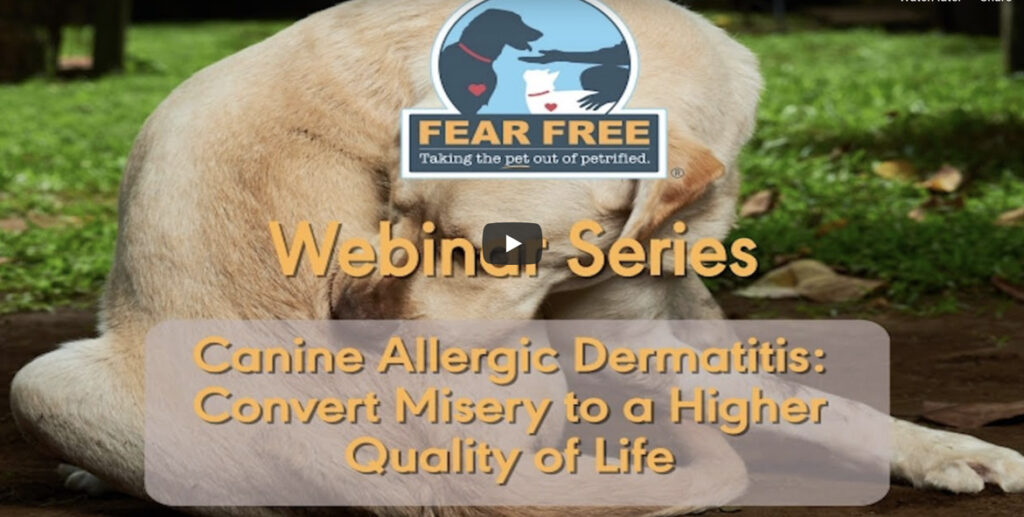
Canine Allergic Dermatitis: Convert Misery to a Higher Quality of Life
What better way to decrease stress and anxiety than by increasing quality of life? In this webinar, Dana Liska, DVM, DACVD, discusses canine allergic dermatitis and the stress chronic disease causes for dogs, their owners, and the veterinarians caring for them. She also shares tips for decreasing caregiver burden and improve quality of life for everyone involved in the veterinarian-client-patient relationship.
Sponsored by Zoetis.
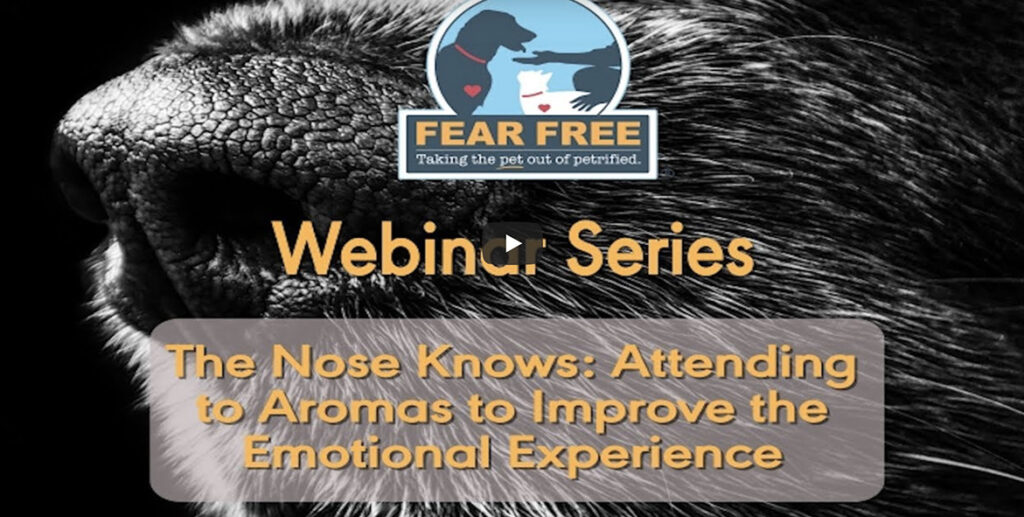
The Nose Knows: Attending to Aromas to Improve the Emotional Experience
Dogs and cats are known for their remarkable olfactory capabilities. Olfactory experiences and associations can trigger profound emotional responses. In this webinar, Jacqueline Neilson, DVM, DACVB, explores how to manage odors during the veterinary visit to minimize patient fear, anxiety, and stress.

How to Raise a Gentle PUP: 3 Tips to Share with Every Puppy Parent
“PUP” isn’t just short for “puppy.” It stands for three core puppy-raising principles: Praise, Unflappable, and Prevention.
In this webinar, Jacqueline Neilson, DVM, DACVB, covers how to:
Sponsored by Elanco.

 My cat Cleo is nearly 17 and receives sub-q fluids regularly at home. She used to grumble and try to get away but once I started Fear Free, I began giving her favorite crunchy treats before, during, and after administering fluids. Now she purrs through the whole procedure, and any time I approach the spot in the house where we do fluids, she walks up for “crunchie time.” I’ve been able to switch back to a larger needle because she doesn’t notice the poke while snacking, which makes administration faster, too.
My cat Cleo is nearly 17 and receives sub-q fluids regularly at home. She used to grumble and try to get away but once I started Fear Free, I began giving her favorite crunchy treats before, during, and after administering fluids. Now she purrs through the whole procedure, and any time I approach the spot in the house where we do fluids, she walks up for “crunchie time.” I’ve been able to switch back to a larger needle because she doesn’t notice the poke while snacking, which makes administration faster, too.
Kate Regehr, Douglas College, New Westminster, British Columbia, Canada
Last year, Moose came into our clinic with lots of anxiety and fear, so much that we were unable to properly perform a physical exam or collect blood from him. This year, Moose had trazodone on board and his visit went fantastic. Our team was able to get him on the scale, perform a full exam, and collect blood. Moose’s mom was so happy and relieved to know that Moose could have a Fear Free veterinary visit where Moose can feel safe.
Jessica Decock, Georgian Bay Veterinary Hospital and Mobile Services, Perkinsfield, Ontario, Canada
 Chewy had a lot of fear and anxiety at the veterinary clinic, causing her to behave aggressively and making it difficult to give her the care she needed. While training her, I observed various signs of pain, which were most likely adding to her anxiety. I alerted her caregiver to my observations so she could better assess and monitor her dog and update her veterinarian. Chewy and her caregiver had previously had negative and traumatic experiences at a veterinary clinic so I referred them to Keystone Veterinary Clinic, which has Fear Free Certified Professionals who created a handling plan to enable Chewy to have a thorough exam, radiographs, and other diagnostics in a safe and low-stress manner. I also worked with the owner to begin muzzle training. The combination of appropriate scheduling, handling, and sedation, Chewy was able to receive the diagnostics and treatment she needed.
Chewy had a lot of fear and anxiety at the veterinary clinic, causing her to behave aggressively and making it difficult to give her the care she needed. While training her, I observed various signs of pain, which were most likely adding to her anxiety. I alerted her caregiver to my observations so she could better assess and monitor her dog and update her veterinarian. Chewy and her caregiver had previously had negative and traumatic experiences at a veterinary clinic so I referred them to Keystone Veterinary Clinic, which has Fear Free Certified Professionals who created a handling plan to enable Chewy to have a thorough exam, radiographs, and other diagnostics in a safe and low-stress manner. I also worked with the owner to begin muzzle training. The combination of appropriate scheduling, handling, and sedation, Chewy was able to receive the diagnostics and treatment she needed.
Tabitha Kucera, RVT, CCBC, KPA-CTP, Positively Pawsitive, Cleveland, Ohio
 Gus had developed severe resource guarding of his food and water bowls, as well as fear and anxiety regarding being touched and having his gear put on and taken off. As a result, he snapped at and bit a walker. We worked closely with his owners and utilized Fear Free strategies and positive reinforcement training to get Gus comfortable with having strangers in the home. We were eventually able to find a solution that allowed Gus to be comfortable having walkers touch and refill his water bowl and approach his food bowl without any signs of resource guarding or fear, anxiety, and stress. Now Gus happily greets his walker at the door, demands affection, and has no issues on his walk or in his home.
Gus had developed severe resource guarding of his food and water bowls, as well as fear and anxiety regarding being touched and having his gear put on and taken off. As a result, he snapped at and bit a walker. We worked closely with his owners and utilized Fear Free strategies and positive reinforcement training to get Gus comfortable with having strangers in the home. We were eventually able to find a solution that allowed Gus to be comfortable having walkers touch and refill his water bowl and approach his food bowl without any signs of resource guarding or fear, anxiety, and stress. Now Gus happily greets his walker at the door, demands affection, and has no issues on his walk or in his home.
Katie Pape, Windy City Paws, Chicago, Illinois
Yesterday, we had a new client come in for a vaccine appointment for her new blue merle Corgi puppy, which she had picked up the previous day. In the lobby, the pup was quiet and at first glance appeared to be coping well, but once in the exam room, I noticed she was scared and only wanted to stay between mom’s legs. We needed to vaccinate her so she could attend the puppy kindergarten class our behaviorist runs. We were able to get an oral bordetella vaccine in her, luring with baby food. When we attempted to poke with the needle for the other vaccination, though, she cried. We tried to warm her up to us so we would be able to get the vaccination in her. She escalated in the room and turned and growled. We then decided to abort mission. We did not want to ruin her experience at the veterinarian, especially since this was her first time here and she was a baby. We prescribed gabapentin and planned to have her come in the next day, early in the morning, to give her a better experience. Luckily, mom and dad were 100 percent on board with this. They came in the next morning and our front desk staff directed them to a room right away. When we walked in with the vaccine, she was asleep on the table. Dad said she was very sleepy. I grabbed a cup of Braunschweiger and fed her a small piece of it. She eagerly ate it but didn’t move her body. We desensitized and performed gradient of touch and she was fully distracted by the yummy treats. We gave her the vaccine and she never stopped eating and did not even notice the poke. We were thrilled!! Yay for pre-visit medications!
Maria Marano, The Ohio State University Veterinary Medical Center Community Practice, Columbus, Ohio
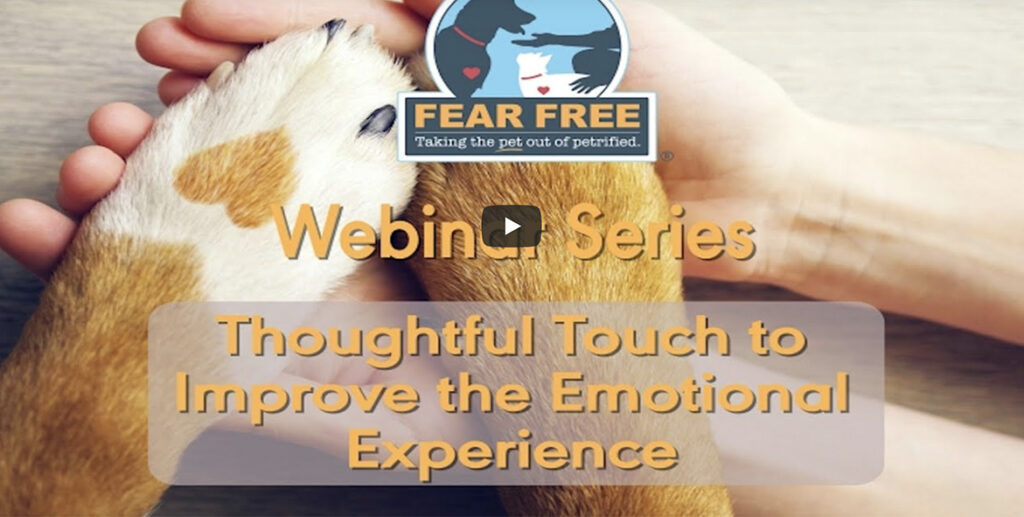
Thoughtful Touch to Improve the Emotional Experience
How we handle our patients and their tactile experience in our practices can impact their comfort and welfare during the veterinary visit. In this webinar, Jacqueline Neilson, DVM, DACVB, covers best practices to ensure that every physical interaction in your practice offers the best possible pet experience.
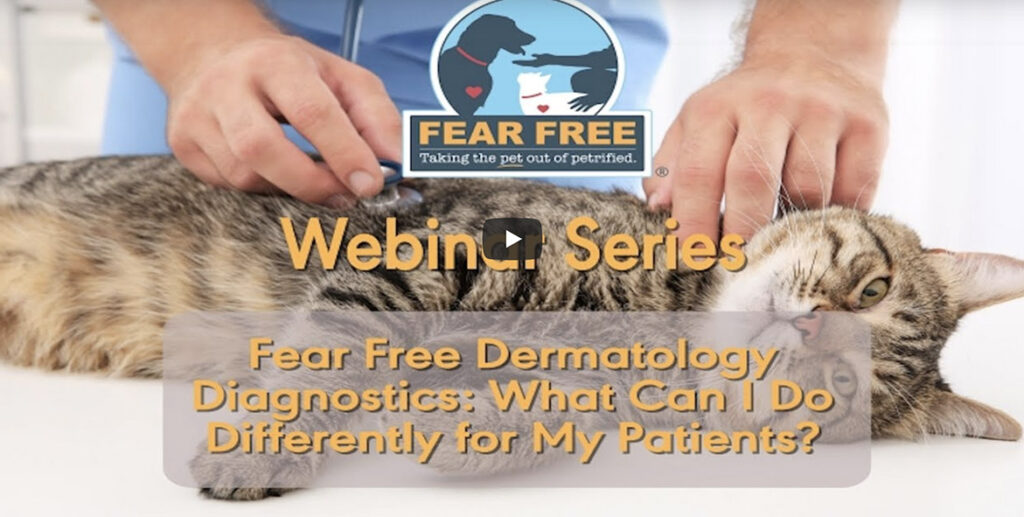
Fear Free Dermatology Diagnostics: What Can I Do Differently for My Patients?
In this webinar, Michele Rosenbaum, VMD, DACVD, shares targeted therapies for the itchy dog, with patient comfort and relief a priority. She presents a streamlined diagnostic workup for the itchy dog to find the underlying cause of the itch. Also covered are Fear Free tips and new helpful dermatology resources to help compliance and ease anxiety and stress for pets and their owners during the diagnostic workup and when designing a long-term treatment plan. She shares communication tips and resources to help pet owners deal with itch flares and ends with an introduction to Itchy Pet Awareness Month (August) with resources to get your team excited and ready.
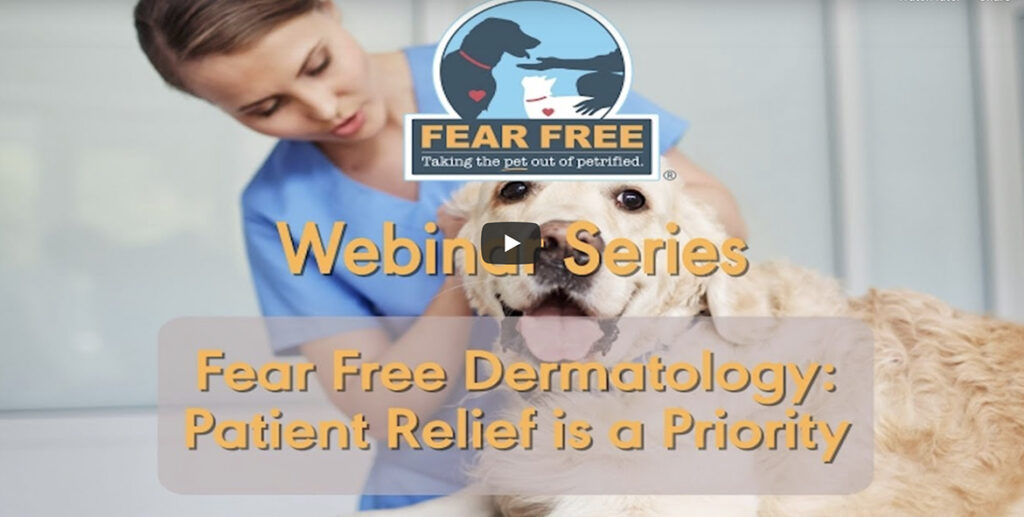
Fear Free Dermatology: Patient Relief is a Priority
In this webinar, Michele Rosenbaum, VMD, DACVD, discusses a team approach to seeing the itchy dog, with patient comfort and relief a priority. She shares Fear Free tips and new helpful dermatology team resources for CSRs, technicians, and veterinarians to put into practice for each stage of the appointment.